Want to create Google Analytics alerts to automatically keep an eye on your traffic and conversions for you?
GA4 alerts (also called Google Analytics Insights) will help you track significant changes in your website traffic, user interactions, and conversions. Thanks to timely custom alerts, you can immediately catch and solve any problems that are harming your traffic before it’s too late.
Or, use alerts to track traffic spikes, capitalize on that extra traffic, and make more money from your visitors.
What Are Google Analytics Alerts?
Google Analytics alerts or Google Analytics Insights are custom alerts you can create in GA4 that automatically send you an email when a specific change occurs in your data.
For instance, you can create custom alerts that are triggered when:
- Your overall traffic dips by a certain percentage over the previous day
- Your organic traffic dips by a specific percentage week over week
- There’s a spike in direct traffic
- You had a certain percentage less sales yesterday than the day before
- Your ad revenue was down yesterday
- You had a spike in overall traffic or conversions
With GA4 alerts, you can create just about any custom alert you think you’d ever need.
Why Set up Google Analytics Custom Alerts?
Running a business (or marketing one) can make a person busy. That makes checking Google Analytics every day, or even a couple of times a day, just not doable.
However, it’s incredibly important to notice any sudden drops or spikes in website traffic, sales, signups, and other conversions. These drops can mean big problems with your website, or spikes can mean there’s a big opportunity somewhere to make more money.
If you miss these drops or spikes for even just a couple of days, that can make a significant impact on your business’s bottom line. That’s why it’s essential to set up custom GA4 alerts!
Google Analytics custom alerts are handy for monitoring changes in your Analytics reports and notifying you immediately. When you can instantly investigate and find out what’s causing the changes in your Analytics data, you’re protected from losses that you could have saved.
If you’re a WordPress user, though, you can set up custom alerts/insights without even having to set them up in GA4! Find out how below.
Now, let’s go ahead and take a look at the process of creating custom alerts (also called custom Google Analytics Insights) in Google Analytics.
How to Create Google Analytics Alerts/Insights in GA4
To get started, ensure you’ve signed into your Google Analytics account. If you’re not already there, click on the Home tab. Scroll down until you see the Insights section. There, click View all insights:
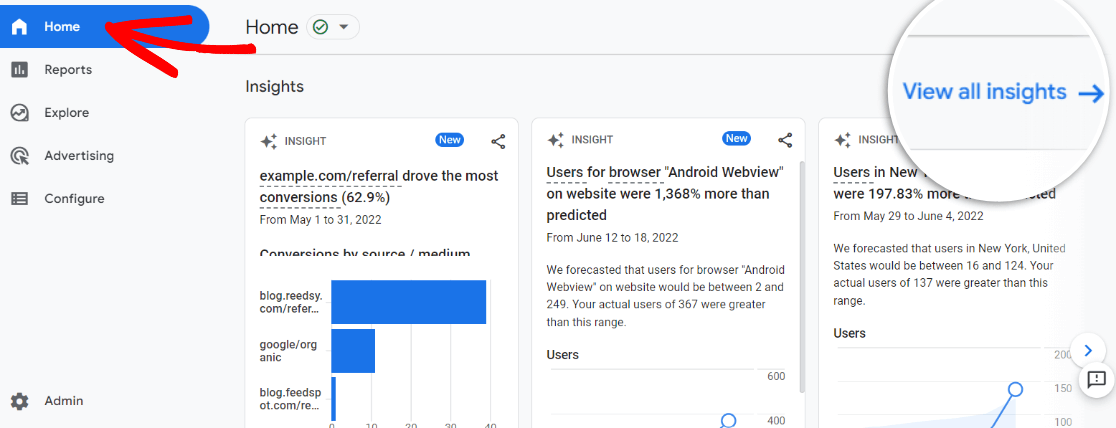
Then, click the blue Create button:
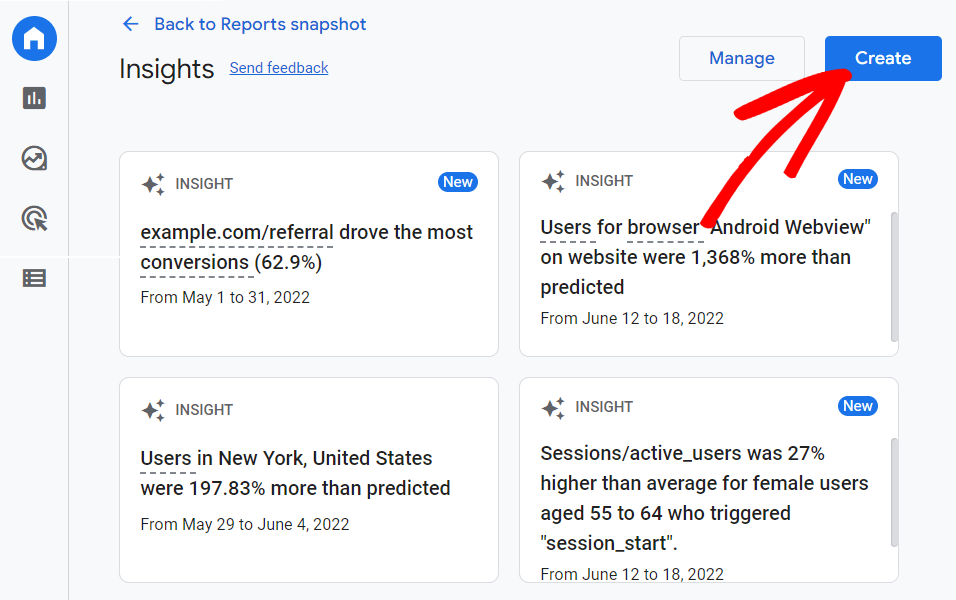
On the next page, Google Analytics will give you some suggestions. If you’d like to turn on any of the suggested alerts, go ahead and check the boxes and click the Create selected button:
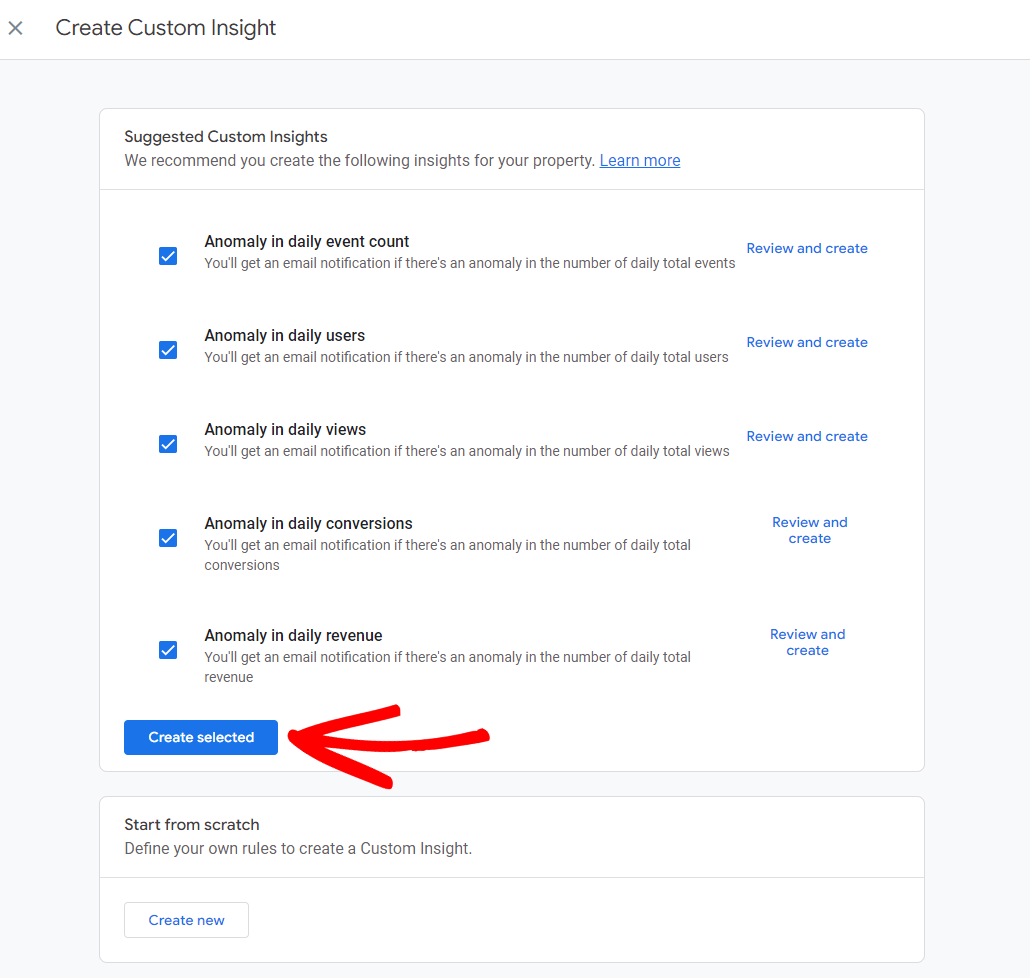
Or, if you’d like to create your alert, click the Create new button under Start from scratch:
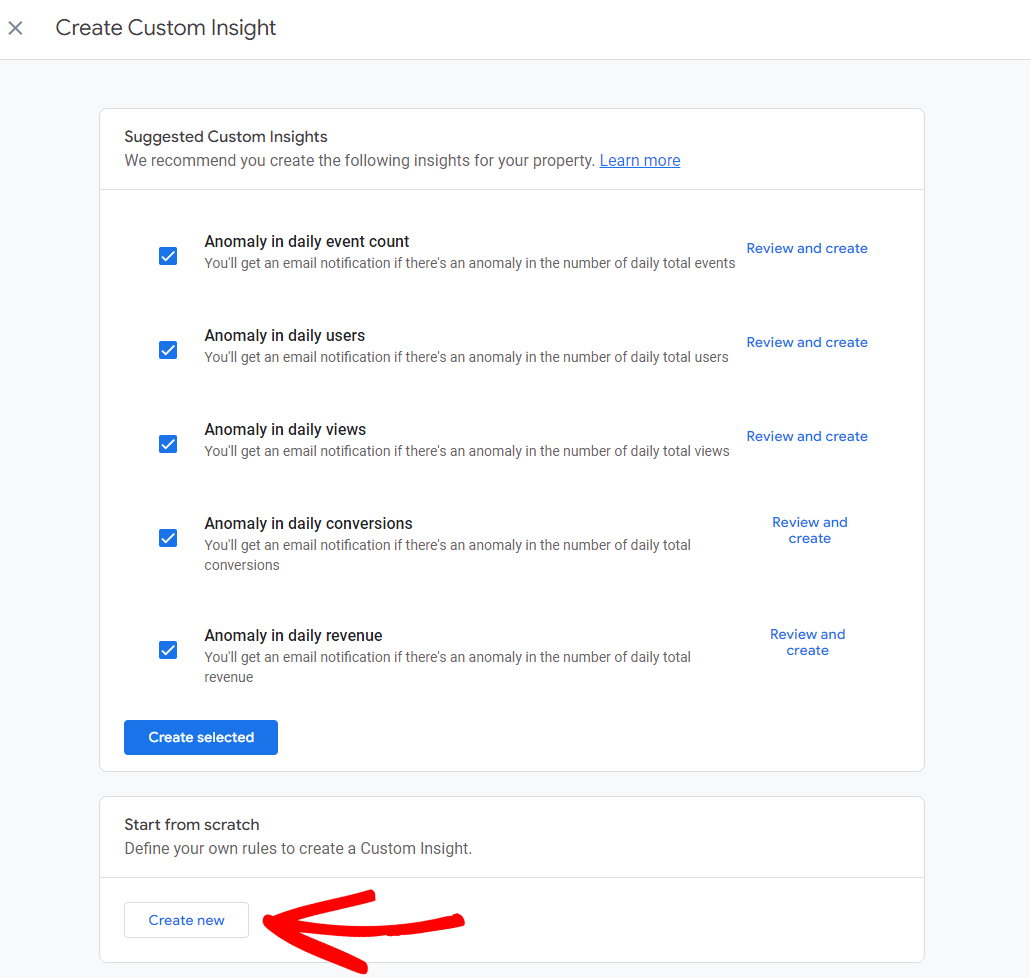
Now, you’ll be able to choose:
- Evaluation frequency: How often you want your Google Analytics alert (or Insight) to run. You can have it check for anomalies hourly, daily, weekly, or monthly. So, for example, if you want to see if your revenue dropped 50% over yesterday, you’d choose daily.
- Segment: You can get specific here about your alert by adding a segment. You could change it so that you’re only looking at traffic from a particular country, first users from a specific campaign, and more.
- Metric: This is what you’re asking Analytics to keep an eye on for you. Set up your alert to watch your conversions, page views, product revenue, engagement rate, and more.
- Condition: This is the trigger that’ll tell Analytics to notify you. Leave it at “anomaly” for Google to watch for differences for you, or choose one of the options to make it more specific.
- Value: The Value box will appear if you choose a value-specific condition like “is less than or equal to.”
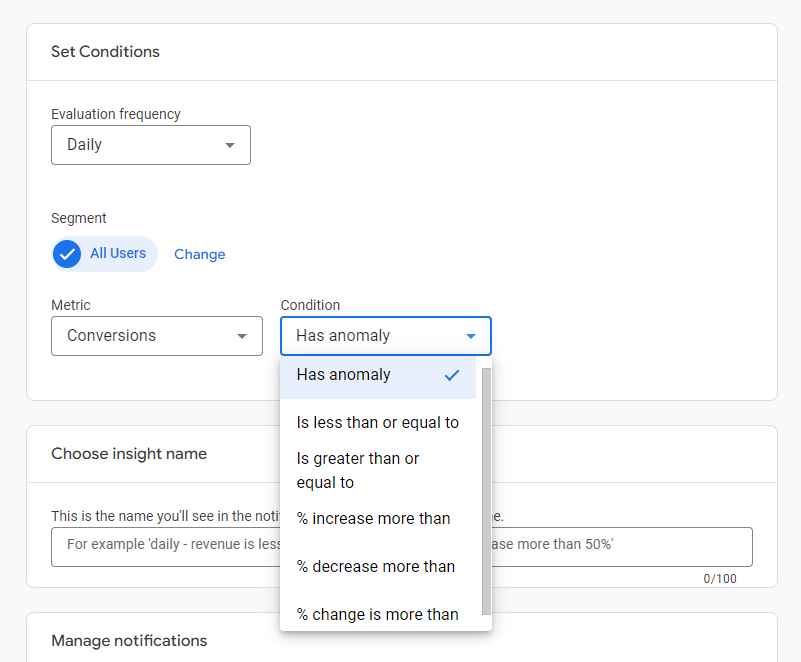
Once you have your conditions set, go ahead and give your new Google Analytics alert a name and input an email address (or multiple) for it to notify:
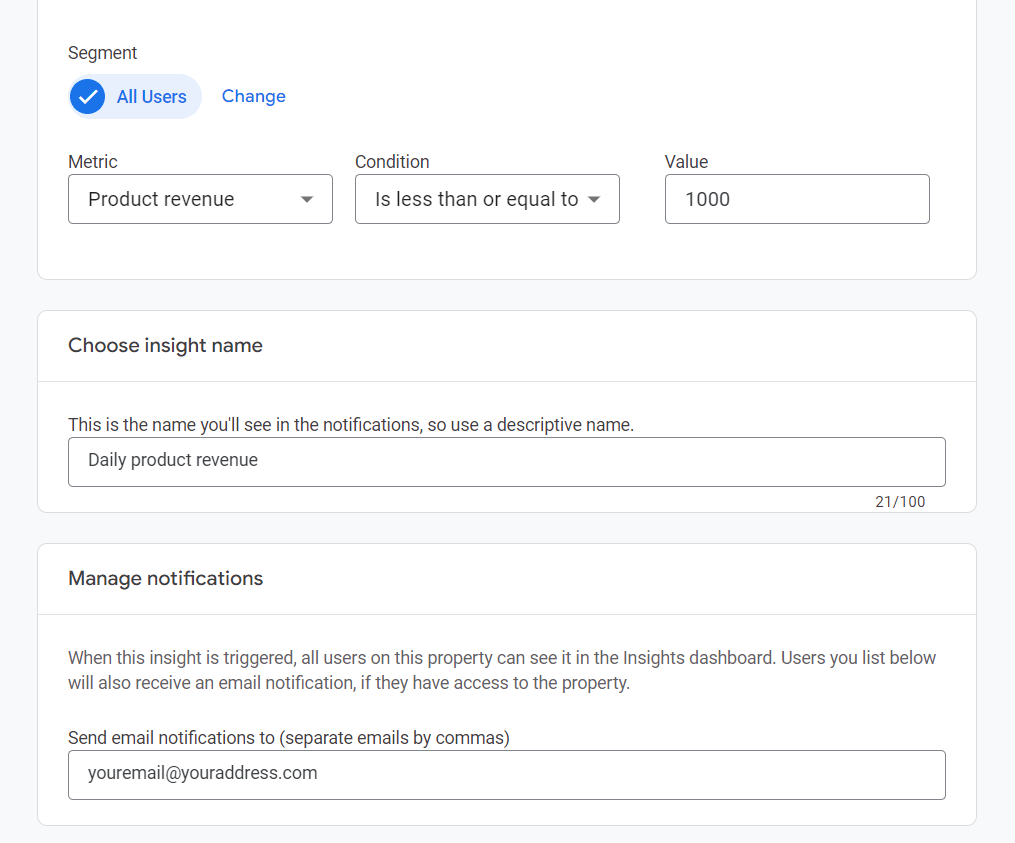
Once the alert is set up the way you want, scroll up and click the blue Create button.
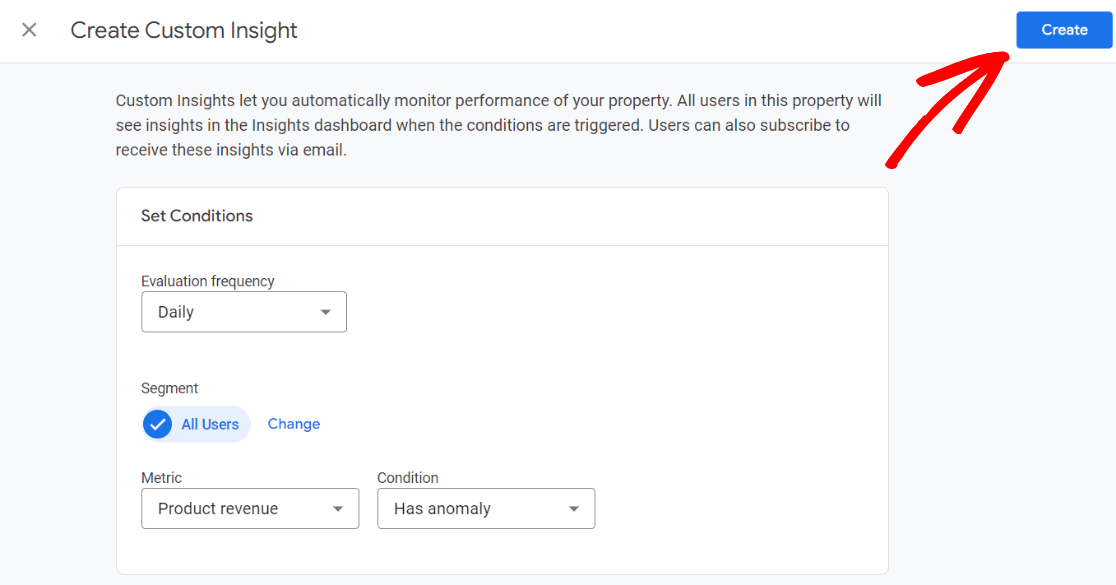
That’s it! You’ve created a new alert in Google Analytics. Now, you can create more alerts following the same process.
How Do You Manage Google Analytics Alerts?
Managing Google Analytics custom alerts is as simple as creating one.
As we talked about above, you can find your list of custom alerts by clicking on View all insights on the Home screen. There, click the Manage button:
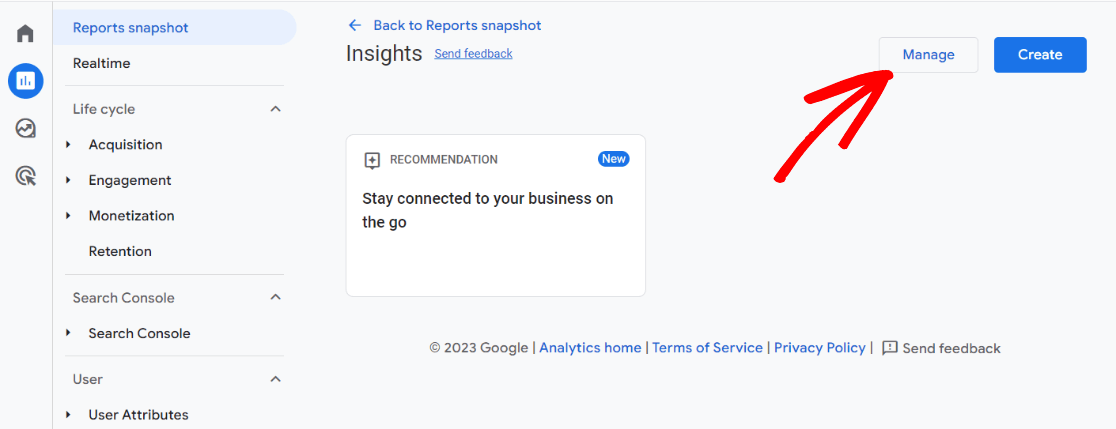
Switch email notifications on or off right on this screen, or click the three dots to edit or delete your alert.

Google Analytics Alerts & Insights in WordPress
If you have a WordPress website, you may not need to rely on Google Analytics Insights to let you know what’s going on with your website. MonsterInsights can do the same thing!
MonsterInsights is the best Google Analytics plugin for WordPress. It allows you to easily connect your WordPress site with Google Analytics so you can view all the data that matters most to your business right inside your WordPress dashboard.
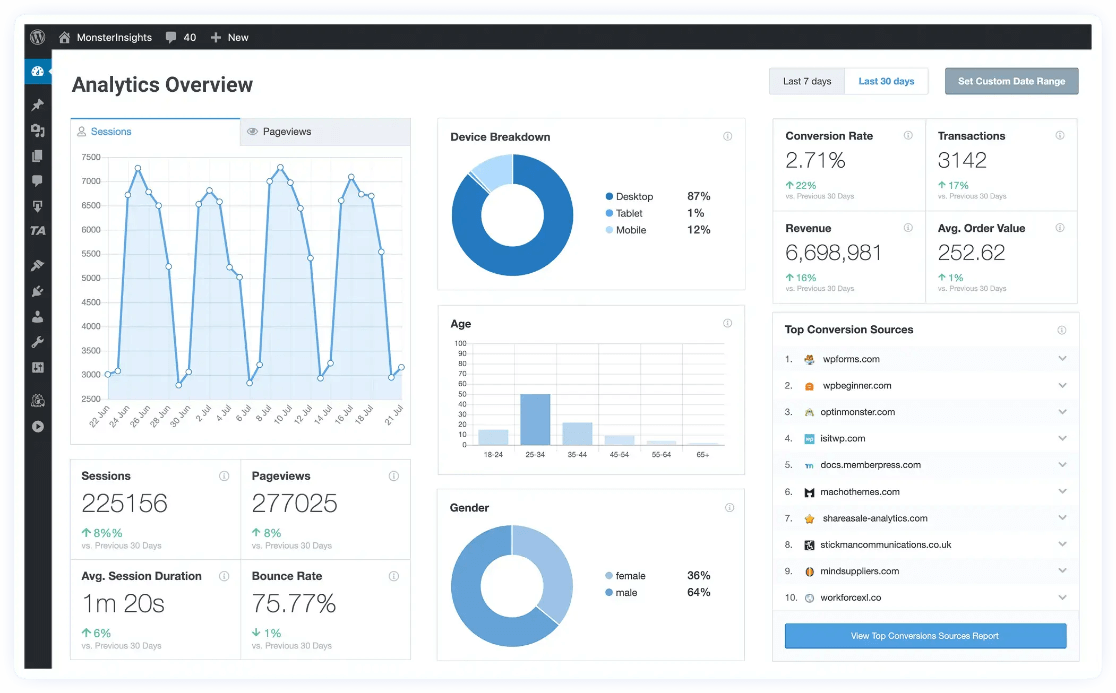
Plus, with the click of a button, you can set up sophisticated tracking features such as event tracking, eCommerce tracking, form tracking, custom dimension tracking, outbound link tracking, and more.
There are two ways MonsterInsights can eliminate the need for you to create Google Analytics Insights. First, if you’re a MonsterInsights Agency user, you’ll have access to the Exceptions addon.
The Exceptions addon keeps a close eye on your Google Analytics data, watching for 16 different types of anomalies, so you don’t have to. That includes big, sudden changes in:
- Conversion rate
- Traffic
- Transactions
- Engagement rate
- Bounce rate
- And more
If any unusual activity is detected, you’ll receive an email alert. This will allow you to take quick action and resolve any issues before they cause major problems. The alert will also be recorded in your Exceptions report:
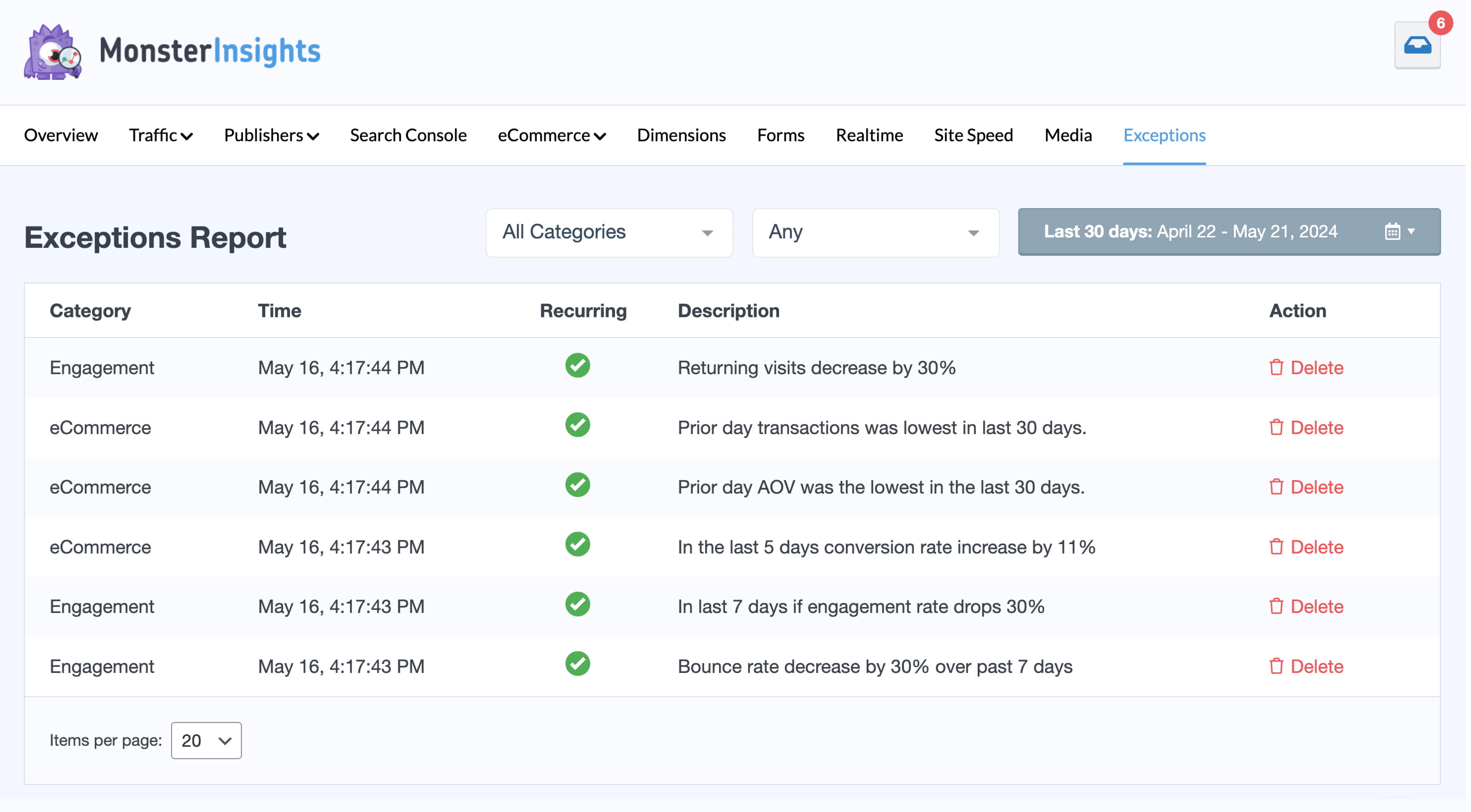
Not a MonsterInsights Agency user? If you’re always working in your WordPress dashboard, viewing Google Analytics reports is far easier with MonsterInsights’ dashboard reports. With the dashboard full of reports, you may not even need to create custom Google Analytics Insights!
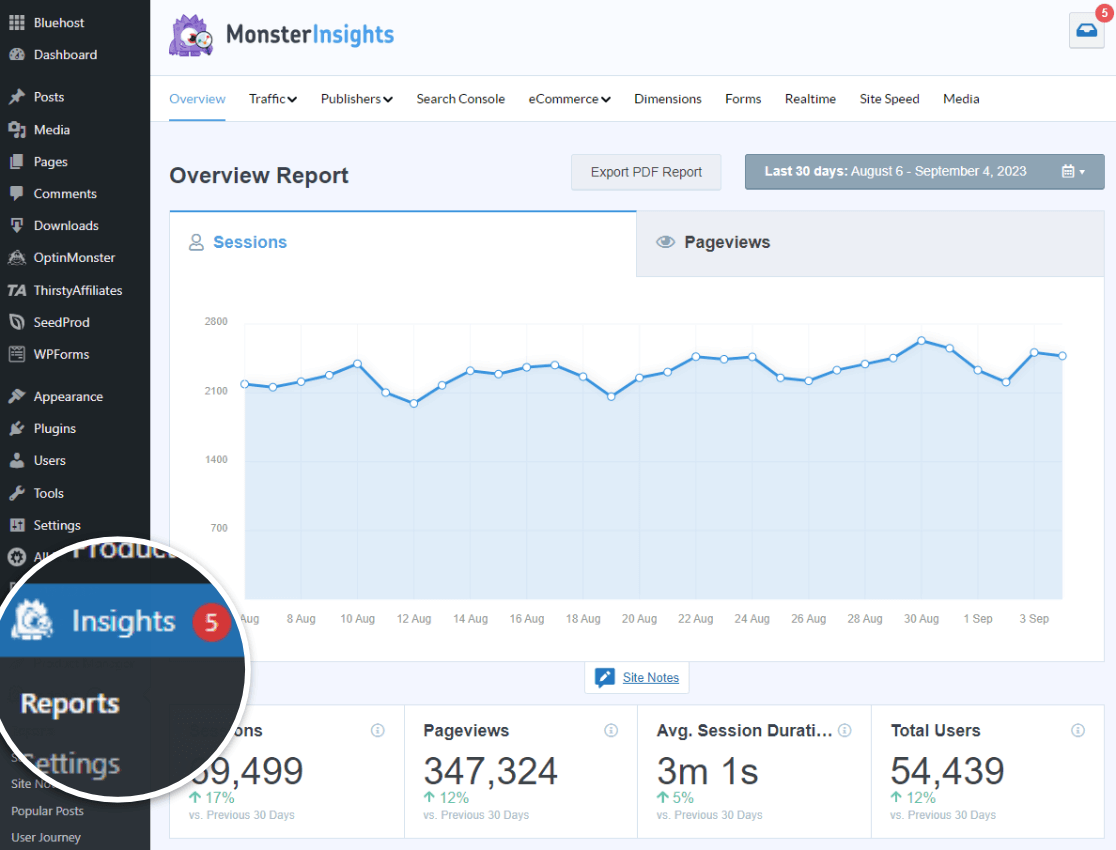
If you open your WordPress dashboard every day to work on your site, you can see your website traffic, revenue, campaign data, site speed, and so much more right there without even opening Google Analytics.
We hope this article helped you learn how to create and manage Google Analytics alerts and insights in Google Analytics. You may also want to see our guide on How to Track Link Clicks in Google Analytics 4 and WordPress.
Are you still waiting to start using MonsterInsights? What are you waiting for?
Finally, follow us on YouTube for more helpful Google Analytics tips and tutorials.
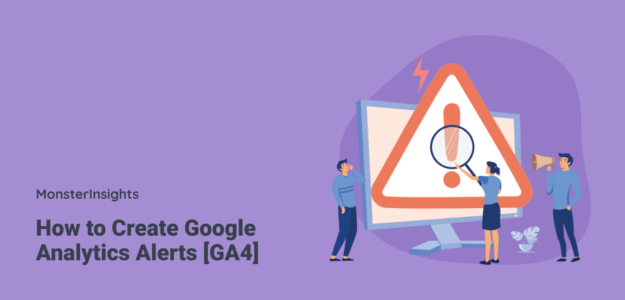
Thanks for the informative and useful tip.
Thanks, Amiyo! Glad to know it helped!
Monsterinsights plugin is really pretty excellent in analytics tracking. I give it five (5) Stars and recommend the lite version to those with new sites as its Pocket friendly, I have used the “lite” version, still works pretty good, I will upgrade soon as my new website grows up.
Thanks to the builders team 👍
Thanks Watumbe! We appreciate the kind words! It really helps us a lot if you can post a review here, too 🙂